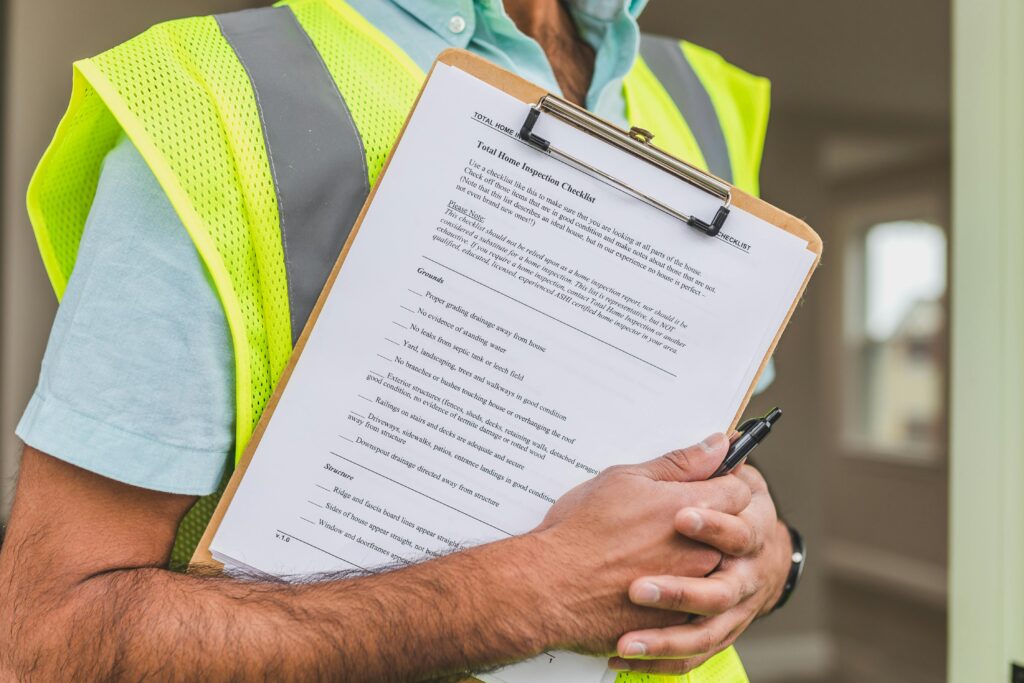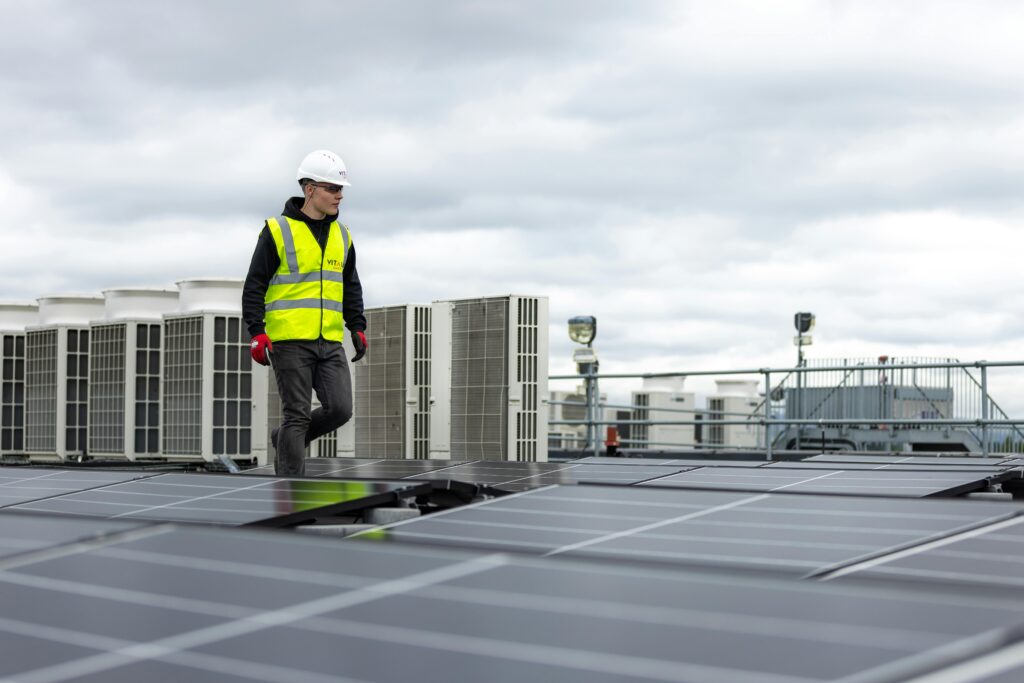As a facility or operations manager, you understand the importance of maintaining your roof and keeping it in top condition. But did you know that there are 4 most common roof repairs? Leaks, ponding water, blistering and cracking, as well as missing or damaged shingles can all be signs that something is wrong with your roof. Don’t let these issues go unchecked; take action to identify and repair them quickly before they cause further damage. Learn more about the 4 most common roof repairs here today.
Leaks
Leaks are one of the most common roof repairs and can be caused by a variety of factors. Poor installation, age, weather damage, and more can all lead to leaks in your roofing system. To ensure that you catch any issues before they become too serious, it’s important to know what causes leaks as well as how to spot them early on.
Causes of Leaks:
Poor installation is often the cause of many leaky roofs; if shingles aren’t properly sealed or installed correctly then water will seep through gaps in the material and cause problems down the line. Age also plays a role; older roofs tend to have weaker materials that are more prone to leaking than newer ones do. Additionally, extreme weather conditions like hail storms or heavy snowfall can damage shingles and leave openings for water to enter your home or business.
Signs of Leaks:
One sign that there may be a leak present is discolored spots on walls or ceilings inside your building – these indicate where moisture has been coming in from outside for some time now and should be addressed quickly before further damage occurs. You may also notice mold growth near windowsills or around door frames; this is another indication that there could be an issue with your roofing system since these areas are usually exposed directly to outside elements such as rainwater runoff from above. Finally, look out for dampness around air vents – if they’re not working properly due their proximity to wet surfaces then it’s likely that you have a leak somewhere nearby which needs attention soonest.
The first step when repairing a leak is finding its source – this can sometimes require professional help depending on how difficult it is to locate (e.g. if it’s behind drywall). Once found, however, fixing up the area isn’t too complicated – patch up any holes with caulk sealant (or other appropriate product) and make sure everything else looks secure so no further water gets into those spaces again. In cases where large portions need replacing due to extensive wear-and-tear then hiring someone experienced with roof repair might be necessary but otherwise DIY methods should suffice just fine here too – just remember safety always comes first when dealing with heights.
Leaks are one of the most common roof repairs and can be easily fixed with the right knowledge. Ponding water is another issue that requires attention, as it can cause damage to your roof over time if left unchecked.
Key Takeaway: Leaks are one of the most common roof repairs and can be caused by poor installation, age, weather damage or other factors. Signs that there may be a leak include discolored spots on walls and ceilings inside your building, mold growth near windowsills and door frames and dampness around air vents; once located it’s often possible to patch up any holes with caulk sealant before seeking professional help if necessary.
Ponding Water
Ponding water is a common roofing issue that can cause serious damage if left unaddressed. It occurs when the roof’s surface is not able to drain properly, resulting in standing water on the roof. Knowing the causes of ponding water and how to repair it are essential for any industrial or commercial facility manager looking to keep their building’s roof in top condition.
Causes of Ponding Water:
Poorly designed roofs, improper drainage systems, clogged gutters, and heavy snowfall can all contribute to ponding water issues. In addition, low-slope roofs (less than 3/12) are more prone to this problem as they do not allow for proper runoff due to gravity alone.
Signs of ponding water may be evident when you observe pooling near drains or at lower points along the roof’s edge after rainfall or snowmelt, as well as any visible damage such as cracked shingle edges and blistering paint. If you notice pooling near drains or at lower points along the edge of your rooftop after rainstorms or snowmelt events, this could be an indication that there is a problem with drainage on your property. Additionally, if you see visible wear and tear around these areas such as cracked shingle edges or blistering paint then these could also be indicators that something isn’t right with your rooftop system.
Ponding water can cause major roof damage if not repaired promptly and correctly, so it is important to be aware of the signs. Cracking and bubbling can be seen, requiring attention to keep the roof structurally sound.
Key Takeaway: Ponding water on rooftops is a common issue that can cause extensive damage if left unaddressed. Poorly designed roofs, improper drainage systems, clogged gutters and heavy snowfall are all contributing factors to this problem – telltale signs such as pooling near drains or visible wear and tear around these areas should be taken seriously in order to prevent costly repairs down the line.
Blistering and Cracking
Cracking and blistering on a roof may be the result of several causes, including extreme temperatures, inadequate attic ventilation, substandard shingle or flashing materials, or incorrect installation techniques. In addition to these external causes, internal issues such as moisture buildup due to condensation or leaking pipes can also cause blistering and cracking on roofs.
Signs of Blistering and Cracking:
The most common signs that indicate blistering or cracking is present are visible patches of discoloration on the surface of the roof which may appear bubbled up or cracked in some areas. If left unaddressed for too long this could eventually lead to water seeping through into the home’s interior structure resulting in further damage if not addressed quickly enough.
To repair any issues related to blistering or cracking, it is important to first identify what caused it before attempting any repairs as this will determine how best to go about addressing it properly without causing further damage down the line. It is recommended that operations managers contact a professional roofer who can assess the situation accurately with their expertise before taking actionable steps towards resolving it. If deemed necessary, one should take precautionary measures such as covering any damaged area with plastic sheet tarp until proper repairs have been made by an experienced contractor familiar with commercial roofs specifically.
Therefore, it is essential to be vigilant for any indications of blistering or cracking on the roof. Missing or damaged shingles are another common roof repair that requires attention; this next section will discuss the causes, signs, and repairs associated with missing or damaged shingles.
Missing or Damaged Shingles
Missing or damaged shingles can be a real headache for any operations manager or facilities manager. It’s important to identify and address the issue quickly, as it can lead to further damage if left unchecked.
Age-related wear and tear, extreme weather conditions such as high winds, hail storms or even ice dams in cold climates can all wreak havoc on a roof’s shingles. In addition to these issues, improper installation by contractors, animals like birds pecking away at the surface of the roof over time and debris buildup that traps moisture underneath could also be contributing factors. Act promptly to stop the deterioration from getting worse.
Inspecting your roof for signs of missing or damaged shingles requires a keen eye. Look out for gaps in coverage where tiles should be overlapping, discoloration from algae growth, curled edges on individual tiles, cracked and exposed granules, bald spots without any remaining granules, broken tabs along the edge of rows which could indicate wind damage tearing pieces off; water staining indicating possible leakage points beneath the surface layer(s); and evidence of wildlife nesting around chimneys or other areas with access to vulnerable parts of your roof system.
Key Takeaway: A keen eye is needed to identify and address roof repairs quickly, as they can lead to further damage if left unchecked. Age-related wear and tear, extreme weather conditions, improper installation by contractors or animals pecking away at the surface of the roof may all be contributing factors; so look out for gaps in coverage where tiles should overlap, discoloration from algae growth and curled edges on individual tiles etc., before it’s too late.
Conclusion
In conclusion, roof repairs are an essential part of maintaining a safe and secure structure. The 4 most common roof repairs include leaks, ponding water, blistering and cracking, as well as missing or damaged shingles. It is essential to recognize these issues quickly in order to avert greater harm from occurring further down the road. By addressing these problems quickly and efficiently with professional help when needed, you can ensure that your property remains structurally sound for years to come.
If you’re looking for roof repair solutions, look no further! CDS Roofing provides reliable and efficient repairs to the four most common roof problems. Contact us today for a free consultation and let our experienced professionals take care of your needs.




